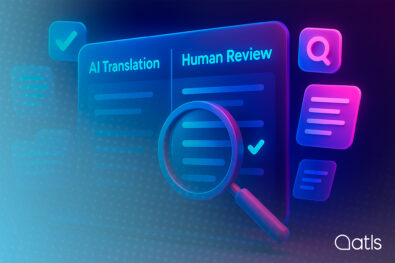In an increasingly globalised and digital world, multilingual virtual events are now standard practice at international conferences, corporate training courses, shareholder meetings and product launches. Remote simultaneous interpreting has become an essential way of ensuring that all participants can understand and actively take part regardless of their language.
This kind of interpretation allows attendees to listen to the speaker's intervention in their own language, in real time and without interruptions due to the work of professional interpreters operating in virtual booths. However, the technology used plays a pivotal role in the quality of the service. This is where many companies have to make a crucial choice:
Which platform offers a better experience for simultaneous interpreting: Zoom or Microsoft Teams Pro?
Both tools have features for adding interpretation channels yet there are substantial differences in usability, technical control, audio stability and pre-setting. Picking one or the other can make the difference between a seamless, professional experience or a chaotic and confusing session for attendees.
In this post we take a closer look at the simultaneous interpreting capabilities in Zoom and Microsoft Teams Pro to help you make an informed choice and ensure your next multilingual event is a resounding success.
Zoom: the most mature platform for remote simultaneous interpreting
Zoom was a trailblazer in natively embedding simultaneous interpretation functionality in its platform and to this day is still the solution of choice for multilingual event organisers and professional interpreters. Its focus on the user experience for both participants and planners along with a dedicated interpretation setup makes it the most reliable and robust solution for multi-language events.

Zoom was a trailblazer in natively embedding simultaneous interpretation functionality in its platform and to this day is still the solution of choice for multilingual event organisers and professional interpreters. Its focus on the user experience for both participants and planners along with a dedicated interpretation setup makes it the most reliable and robust solution for multi-language events.
Key benefits of Zoom for simultaneous interpreting
- Integrated language channels
The platform allows you to set up parallel audio channels for each language combination. Attendees can easily pick the language they want to listen to the event in straight from the meeting menu without having to exit or install extensions. - Seamless switching between interpreters
Zoom enables multiple interpreters to be assigned to the same language pair, making it easier for them to take turns without interruptions which is critical for long or mentally taxing events such as technical or legal conferences. - Full organiser control
The meeting host can manage interpreters, turn interpretation on or off at any time and oversee which channels are in use. This furnishes an additional layer of control and security for organisers and technical coordinators. - Intuitive interface for participants
Even users with no previous experience of virtual events can easily find and turn on the interpretation feature. The language selection option is visible and clearly labelled, thus minimising incidents and the need for technical support during the event. - High audio stability in multilingual environments
The sound quality is consistent even on average connections and the interpretation channel is kept isolated from the main channel, thereby avoiding mix-ups or overlaps between the source language and the translation.
Technical and setup requirements
You have to meet some basic requirements to use simultaneous interpretation on Zoom:
- Have a Zoom Pro licence or higher (Business, Enterprise or Education).
- Turn on the interpreting function beforehand in the account settings (it is not enabled by default).
- Manually add interpreters before the start of the event, specifying their Zoom email address and the language pair they will be working in.
It is also a good idea to hold a test meeting with all interpreters and the technical team at least one day before the event to check settings, microphones, shifts and channel usage.
What type of events is it ideal for?
Zoom is especially recommended for:
- Multilingual webinars with large audiences
- International conferences and technical forums
- Corporate training with a global footprint
- General assemblies, executive committees and institutional meetings with official interpretation
- Hybrid events with part of the audience in person and part online
By dint of its reliability and the positive experience of thousands of successfully staged events, Zoom has cemented its position as the go-to tool in the remote simultaneous interpreting industry.
Microsoft Teams Pro: simultaneous interpreting in evolution

Microsoft has taken significant steps to fold multilingual capabilities into its collaborative environment and has recently added remote simultaneous interpreting to Teams Premium, an advanced version of its platform. However, this functionality is still at an early stage of development compared to Zoom and additionally has technical and operational shortcomings.
While it is a milestone in building interpretation into the Microsoft 365 ecosystem, using it still calls for specialised setup, technical expertise and some manual adjustments which can make it hard to implement effortlessly at complex or challenging events.
Current Teams features for simultaneous interpreting
- Live interpretation feature available only in Teams Premium
Unlike Zoom, which includes this option in more affordable licences such as Pro, Microsoft restricts simultaneous interpreting to users with the Premium version which comes at an additional cost and may restrict its uptake by small and medium-sized organisations. - Advanced and IT department-dependent setup
Turning on the feature calls for prior setup by Microsoft 365 environment technical administrators plus correct role assignment in the meeting. This can mean logistical barriers if the event does not have specialised IT support. - Limited interpreter management during the meeting
Although interpreters can be pre-assigned, live supervision is less flexible. The organiser doesn't have the same tools as in Zoom to monitor and tweak channels in real time or make adjustments on the fly. - Unclear interface for participants
Many attendees confuse the simultaneous interpretation feature with automatic subtitles or on-screen translations, which can prompt frustration or loss of context if clear instructions are not given. Furthermore, the visibility of the selected language channel is not always intuitive.
Operational limitations to bear in mind
- Not all attendees can easily access the language selection menu, especially if they are not using the updated desktop app.
- Organisers, interpreters and attendees are required to use compatible versions of Teams, preferably under the same corporate infrastructure.
- Interpreter changes may result in small audio dropouts or desynchronisations, impairing speech continuity.
- There is no native function for a trial run of the interpreting function within the production environment, so trying it out in a test environment is essential.

What type of events is it suitable for?
Microsoft Teams Pro (or Premium) may be a feasible solution in scenarios where:
- The organisation already operates regularly within the Microsoft 365 ecosystem.
- It is for in-house multilingual meetings with low reputational risk.
- You have a technical team familiar with advanced Teams setup.
- The number of interpreters and language combinations is small.
- Integration with corporate tools (SharePoint, Outlook, OneDrive) is prioritised over the event's audiovisual experience.
Which option do we recommend at ATLS?
At ATLS we have extensive experience in running multilingual events for businesses, international organisations and public bodies. We have worked with both platforms, Zoom and Microsoft Teams Pro, in a wide range of settings from in-house seminars to international conferences with thousands of attendees. Our recommendation is grounded on technical, operational and user experience criteria while always keeping communication fluency and interpretation quality in mind.
Zoom: the most complete and reliable option for challenging events
If your event is external, multilingual, international in scope or calls for a flawless attendee experience, Zoom is still the more robust and professional option. Its mature simultaneous interpreting capabilities, technical stability and intuitive interface enable:
- ✅ A seamless experience for the end user regardless of their technical proficiency.
- ✅ Optimised audio quality, pivotal for interpreters to work accurately and for listeners to get a crisp message.
- ✅ Smooth and secure management of the interpreter team, with options for channel switching, real-time monitoring and pre-testing within the same environment.
Plus Zoom is widely used in the international events industry which means it offers greater compatibility with technical teams, interpreting agencies and moderators used to the way it works.

Teams Pro: a viable alternative in internal corporate contexts
However, if your company already operates primarily in the Microsoft 365 environment and the event you are planning is smaller, in-house or for people who already use Teams on a regular basis, then Microsoft Teams Pro may be a feasible option. Still, in this case it is essential to:
- Get expert technical advice on how to turn on and set up the interpretation function in the right way.
- Conduct thorough pre-tests with all interpreters and key participants.
- Make sure that everyone involved (organiser, interpreters, attendees) have the appropriate versions and compatible licences.
Our philosophy: the platform should adapt to the event, not the other way around.
Ultimately, the choice of platform has to cater for the event's specific needs: number of languages, audience profile, quality requirements, level of interaction and available technical resources. At ATLS we do not prescribe standard solutions but rather provide bespoke advice to each customer to ensure that remote interpreting is a success whatever the tool chosen.
The success of your event depends on technology… and the team
The platform matters, but the real value comes from the professional interpreters who support your event and the technical team that makes sure everything runs without a hitch. At ATLS, we not only offer remote simultaneous interpreting but also help you choose the right platform, set up the language channels and an ensure an error-free experience.
Looking to arrange a flawless multilingual event?
FAQs about simultaneous interpreting with Teams Pro and Zoom
Which is the best platform for remote simultaneous interpretation: Zoom or Teams Pro?
Zoom offers a more mature and robust experience for remote simultaneous interpreting. It features integrated language channels, high audio stability and an intuitive interface. Teams Pro has improved in this respect but its functionality is still evolving and calls for advanced technical setup.
What are Zoom's advantages for multilingual events with interpretation?
Zoom allows you to assign multiple interpreters per language, manage channels in real time and ensure a seamless experience for participants and organisers. Its audio quality and ease of use also make it the platform of choice for international conferences, webinars and meetings.
What are Microsoft Teams Pro's shortcomings in simultaneous interpreting?
Teams Pro (or Premium) requires more expensive licences, needs prior technical setup and does not have flexible live management. Its interface can be bewildering for attendees and interpreter changes can lead to audio dropouts.
What aspects should I weigh up when choosing a platform for my multilingual event?
You should consider the profile of your attendees, the number of languages spoken, the team's technical skillsets and whether the event is internal or external. For challenging or international events, Zoom is the most reliable option. For in-house meetings in Microsoft 365 environments, Teams Pro may be suitable with appropriate technical support.






